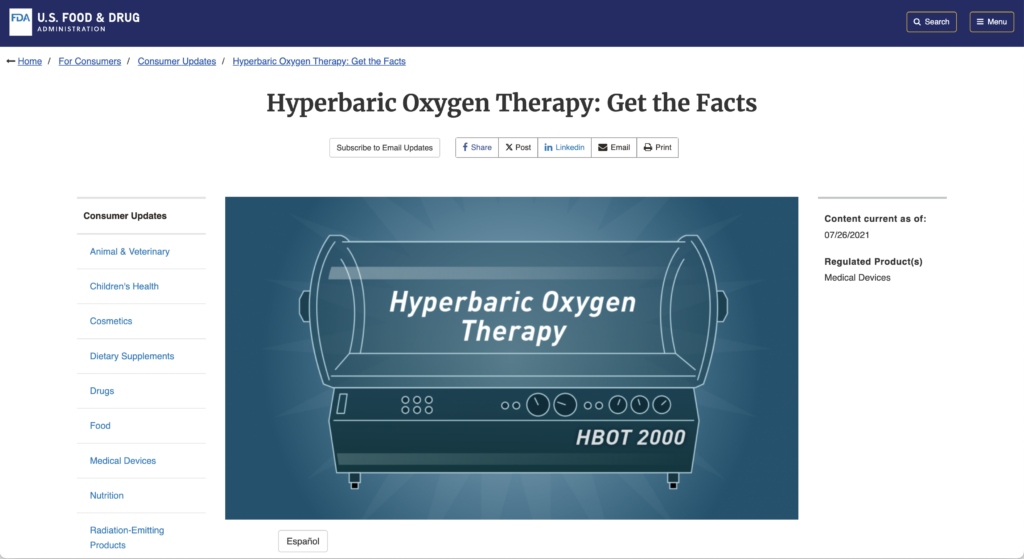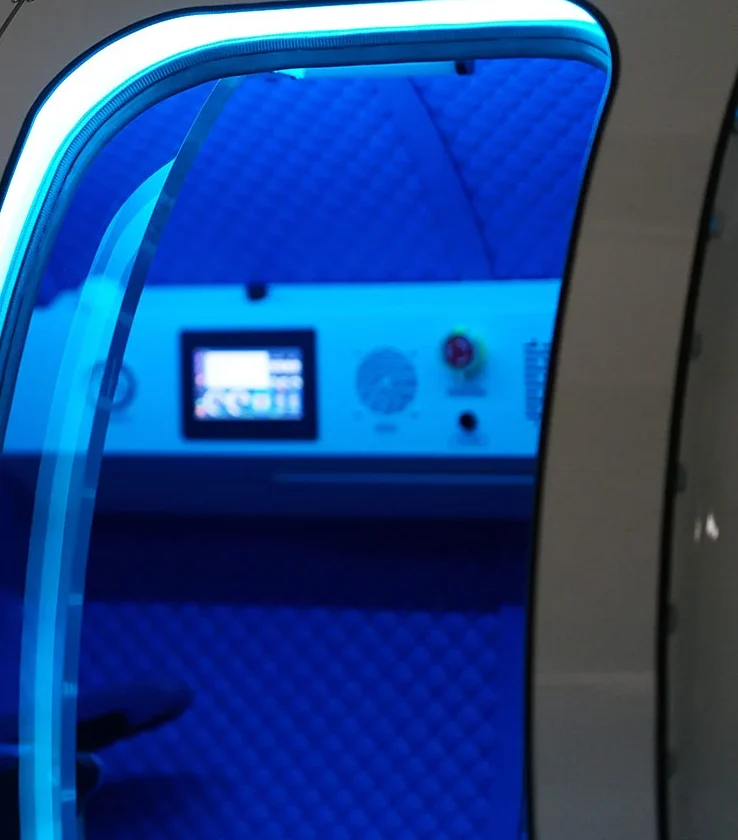Hyperbaric oxygen treatment (HBOT) has a wide range of applications, whether in internal medicine, surgery, gynecology, pediatrics, neurology, orthopedic surgery, oncology, burn treatment, trauma care, or geriatric patients. It serves to complement other mainstream or traditional treatment methods, promoting the repair of various diseases and improving health.
As of July 2021, the U.S. Food and Drug Administration (FDA) has approved hyperbaric oxygen chambers to treat the following disorders.

Picture: The official website of the U.S. Food and Drug Administration (FDA) publishes indications for hyperbaric oxygen therapy
In addition, Hong Kong Hyperbaric Oxygen Treatment Centre (HKHBOT) also provides hyperbaric oxygen treatment services for the following treatments:
For chronic diseases, an average of about five treatments per week is required, with one to two sessions each day, lasting 60 to 90 minutes. The treatment duration varies depending on the severity of the symptoms.
The treatment duration and regimen should be determined based on the response to therapy and the experienced physician’s assessment of the appropriate number of treatments and course of therapy.
Before considering hyperbaric oxygen treatment, it is recommended to consult with a medical professional to determine its suitability and effectiveness.
Read More:US FDA Website

Get a personalized HBOT plan for you
Address: Unit 1914, 19/F, Mira Place Tower A, 132 Nathan Rd, Tsim Sha Tsui, Hong Kong
Hotline:+852 6739 0182
©copyright 2024 HBOT HK Limited. All rights reserved